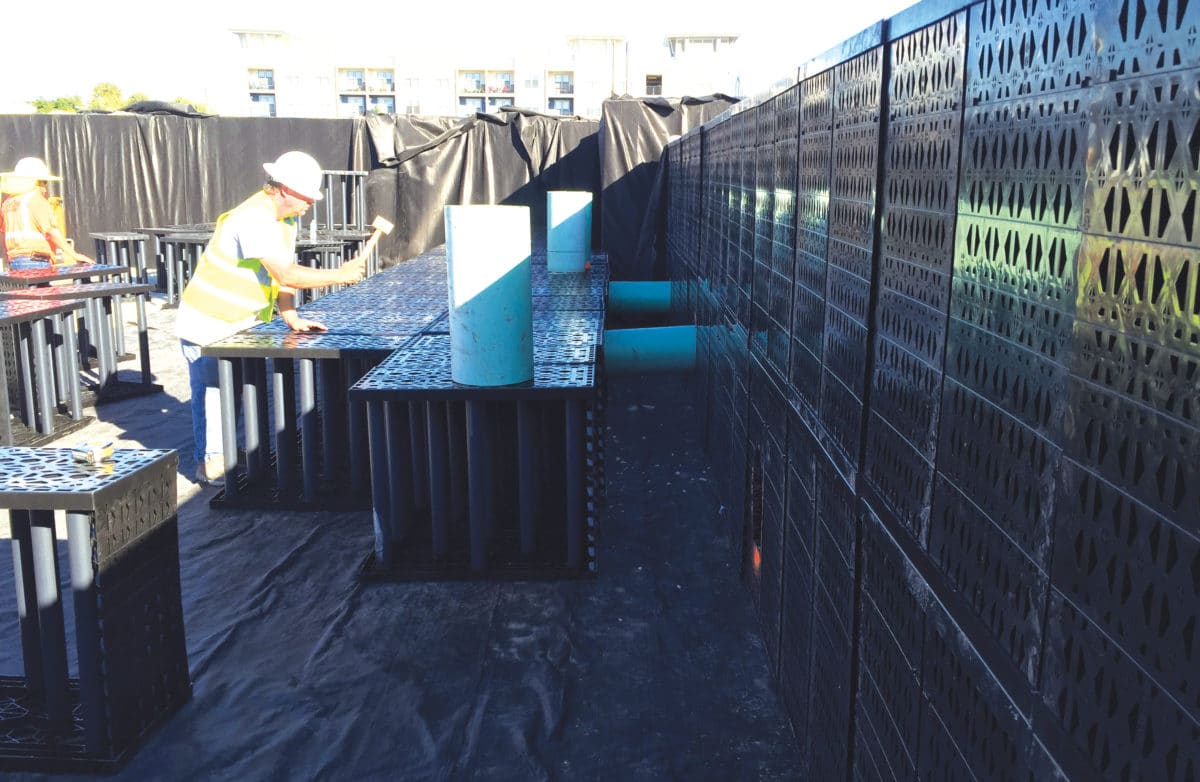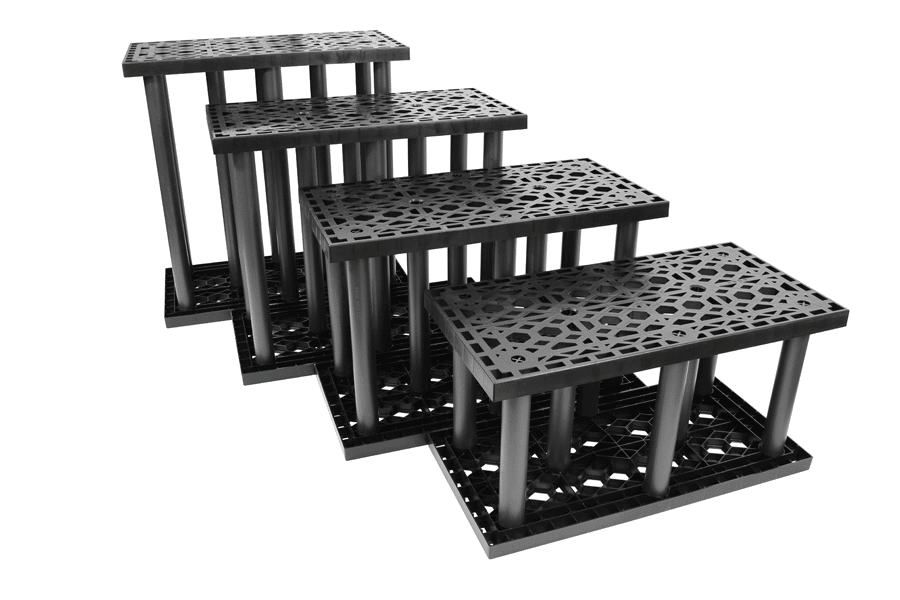Brentwood knows public-private cooperation is the secret to smart stormwater management.

[Photo: Pixabay]
Chinese philosopher Lao Tzu’s observation that “nothing is softer or more flexible than water, yet nothing can resist it” is as true for cities as it is for continents. A sustainable city is able to meet the environmental, financial, social, and cultural needs of its current and future residents, and sustainable infrastructure is an integral component, helping cities achieve their goals in all four dimensions.
Smart stormwater management is necessary to sustainable development; well managed, water can actually serve to strengthen the resilience of a community’s social, natural, and economic responses to change. In an era when severe weather events are on the rise and climate patterns less and less predictable, cities are increasingly looking to residential and commercial property owners to help them accomplish their short- and long-term goals with respect to stormwater management.

The modularity, multiple sizes, and customizability of the Stormtank Module system enables owners to work easily within the constraints of existing structures. [Photo: Courtesy of Brentwood]
Cities and Rain: The Evolution of Stormwater
Historically, cities have managed stormwater with vast and resource-intensive underground pipe systems. The challenge in recent decades is that, as cities continue to grow, the percentage of area requiring infrastructure to manage rainfall has risen. Systems built 50 to 100 years ago (or more) are becoming more inadequate to serve residents’ daily needs, and they can be overtaxed by even minor deviations from established weather patterns.
According to the EPA, many communities are not adequately prepared for the increasingly common weather extremes brought on by climate change, much less the projected future impacts on their communities. Managing stormwater effectively in the future will mean managing rainwater where it falls. Doing so entails a distributed, rather than a centralized, approach, working with property owners on site-specific solutions for which they are responsible.
Enter Brentwood, the family enterprise in its second generation of manufacturing natural solutions to these challenges. Their stormwater management products, like the StormTank Module, lend themselves to a wide variety of applications and customizable solutions; it’s 97% air, is able to hold a high volume of water, and yet is suitable for placing under load-bearing conditions.
Brentwood also offers the StormTank Pack, with similar benefits more suited to landscaping and other low-impact areas; and the StormTank Shield, which reduces pollutant and other undesirable discharge, the final complement to a complete stormwater management system.

StormTank Module is 97% air, is able to hold a high volume of water, and is suitable for placing under load-bearing conditions. [Photo: Courtesy of Brentwood]
Brentwood in Action
Havana Square Apartments is a new development in Tampa’s fast-growing North Hyde Park neighborhood. Completed in 2015, owner Pollack Shores Real Estate Group built this residential complex on a previously vacant lot. Their financial goals required a dense design; the final design developed 2.87 acres of the 2.9-acre lot into two apartment buildings situated around an open courtyard and an on-site parking structure for its residents. City ordinances mandated that the site be able to process a storm event equivalent to one acre-foot of rain, translating to approximately 326,000 gallons of water, or 43,560 cubic feet of storage volume. Surface capture and infiltration in the form of a pond would have detracted from the buildable land and reduced the project’s income potential, which meant the development was going to require a below-ground stormwater management solution if they were going to meet both their financial and environmental goals.
Pollack had collaborated with project engineers, King Engineering, on a project some years prior in which they’d explored different stormwater management systems and ended up choosing Brentwood’s StormTank Module system because it allowed them to exceed the storage requirements well within the allowable footprint of the site. For Havana Square, the engineers designed a pair of Brentwood systems to meet the site’s needs: one under the courtyard to manage rainfall on the site itself, and another under the parking garage to help with flood mitigation of excess stormwater from the surrounding area.
“Brentwood products give the owners the functionality they need; that’s where the cost-effectiveness comes in.”
—
Pat Wysocki, R.H. Moore & Associates
“As with any development, the stormwater system will have impacts on financial aspects of the project—from costs incurred for installation to amount of revenue that can be generated,” says Jason Bailey, product line manager for Brentwood. “We utilized the StormTank Module system on this project for its flexibility, sizes, and price.” Havana Square’s Brentwood system occupies 11,713 square feet, less than 10% of the site’s overall footprint, and yet can store almost 330,000 gallons of water—meaning its residents and neighbors will likely never have to worry about getting trapped in or flooded out of their homes.
True sustainability means meeting the natural, social, and financial needs of sites and communities. Design teams for new construction sites and redevelopments find that Brentwood’s stormwater management products not only meet local requirements, but the projects contribute to the sustainability of their communities, and both property owners and cities benefit. The modularity, multiple sizes, and customizability of the StormTank Module system enables owners to work easily within the constraints of existing structures, greatly simplifying the development process and enabling access to sites where doing so has been traditionally difficult.
“Brentwood products give owners the functionality they need; that’s where the cost-effectiveness comes in,” says Pat Wysocki, product installation specialist with Brentwood distributor, R.H. Moore & Associates. “Its compact footprint requires less material while storing a greater volume of water; it all adds up to a significant cost savings for the owner.”
Read more about Brentwood and catch up on more gb&d water management stories.
